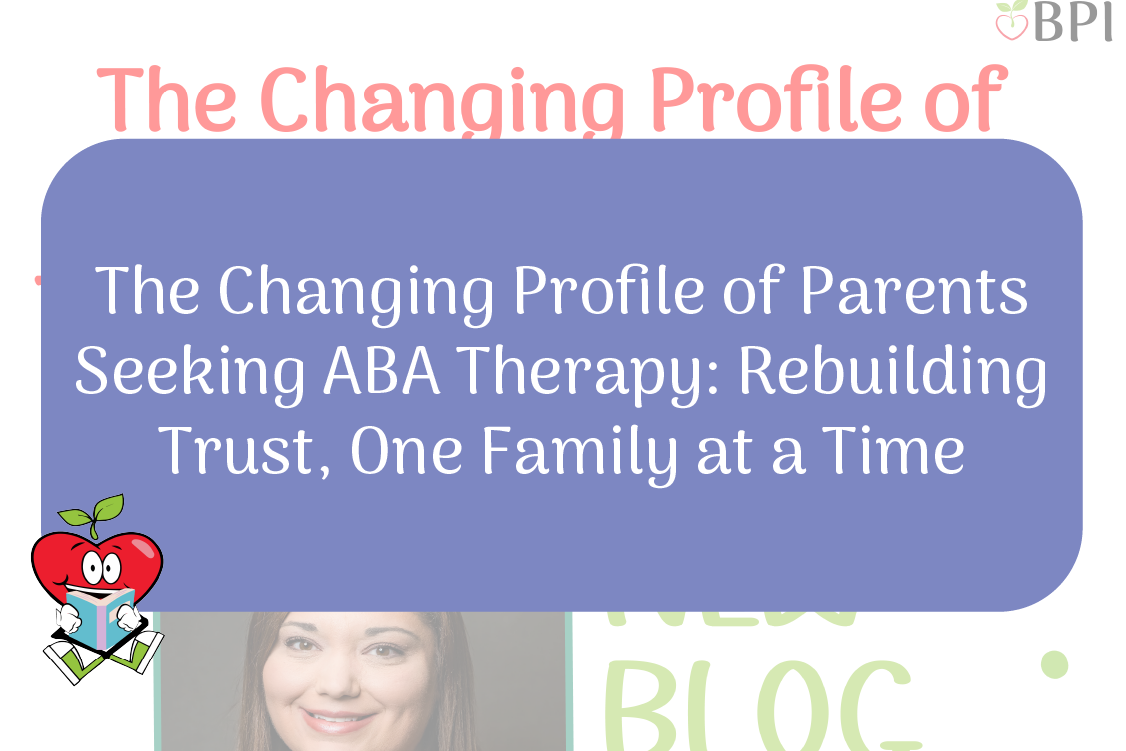Success in Potty Training with ABA
Brandy Davis
Potty training can be a challenging milestone for any child, but for autistic children, it often comes with unique hurdles.
Identifying when they have a soiled diaper or underwear, as well as showing discomfort when wearing soiled diapers or underwear can be barriers they face. With potential delays in communication, it can also be difficult for them to communicate if they need to use the bathroom or if they have a soiled diaper or underwear.
Additionally, some autistic children show signs of stress with the bathroom routine. Changing the child’s diaper, getting the child to go near the toilet, and getting the child to sit on the toilet are all challenges they might face. These challenges can be significant obstacles when thinking about potty training.
Luckily, Applied Behavior Analysis (ABA) techniques can help autistic children overcome these challenges and master potty training. Let’s take a deeper dive into how ABA can make potty training more manageable and successful for autistic children, how to decide if your child is ready for an intensive toilet training program, and offer practical tips for parents and caregivers.
Understanding How ABA Can Help
One of the most significant ways ABA helps with potty training is by providing a structured and systematic approach to a process that relies on a rather unpredictable natural bodily function. ABA breaks down the process into small, manageable steps and uses reinforcement to encourage the desired behavior (i.e., successful voids, initiating using the bathroom).
Depending on the child’s initial skills when starting ABA therapy, their toilet training goals will be individualized specifically for them. For example, if a child shows signs of stress and interfering behaviors when near the toilet, the child might work on being desensitized to the toilet (i.e., touching the toilet, touching their bottom to the toilet when fully clothed).
However, if the child is initially able to sit on the toilet for 15 seconds, the child might work on increasing the amount of time they can sit on the toilet.
Reinforcement is crucial during each step of the potty training process. Whether the reinforcement is verbal praise, an edible item (i.e., M&Ms, Goldfish), or a preferred toy, the immediate delivery of the reinforcer is key to ensuring the likelihood of the desired behavior occurring again.
We’ll discuss this in more depth in a moment.
Preparing for Potty Training
Before starting intensive toilet training, assessing if the child is ready is essential for success.
Signs of readiness include:
- Responding to reinforcement
- Following simple instructions (i.e., sit on potty)
- Staying dry for two hours at a time
- Showing discomfort in soiled diapers
- Sitting on the toilet for up to 5 minutes at a time
While some of these skills develop naturally over time, there are a few skills that can be targeted during ABA therapy. Many children work on following simple instructions, such as sitting on the toilet and completing the bathroom routine (i.e., pulling pants down, pulling pants up, flushing) and sitting on the toilet for up to 5 minutes.
Once the child has mastered these skills and shown other signs of readiness, an intensive toilet training protocol can be implemented.
With collaboration between the child’s caregivers and clinical team, a toilet training protocol will be selected that suits the child’s and family’s needs. Because the child’s caregivers will be implementing the toilet training protocol within the home setting, we always ensure our caregivers understand the commitment as the intensive toilet training can be a minimum of four days and up to several weeks.
The BCBA will work closely with the caregivers to train them on the protocol and ensure they are supported throughout the process.
Once the child’s family and clinical team are ready to begin intensive toilet training, many materials will be prepped including:
- 15-20 pairs of light colored underwear
- Plenty of fluids (preferably water or diluted juice) to ensure opportunities for voids
- Data sheets to track progress
- Reinforcers that are highly preferred and reserved specifically for successful voids
- Moderately preferred toys
- Timer
- Cleaning and sanitizing products in the bathroom
In order to identify reinforcers that are highly preferred and moderately preferred, a preference assessment will be conducted with the child at the clinic. The highest preferred items will be used as reinforcers for successful voids on the toilet and will be reserved for this use only.
All moderately preferred items will be played with throughout the toilet training day to keep the child engaged and having fun.
It’s important to have necessary items to keep the bathroom sanitary and clean throughout the toilet training process. While the goal is for the child to have successful voids in the toilet, there will be accidents along the way. Having gloves, paper towels, baby wipes, and cleaning wipes handy is essential.
The Potty Training Process
We have arrived at the moment we have all been waiting for: potty training, or what BPI’s clinical team likes to refer to as a Potty Party!
While there are many different intensive toilet training protocols that can be implemented, they all have similar elements: scheduled sits on the toilet, reinforcement, positive practice for accidents, and data collection.
In order for the child to learn how to hold their bladder for long amounts of time, they will be taken on a schedule throughout the day. Keeping a consistent schedule will help set up the child for success!
Depending on successful voids on the toilet and accidents, the schedule will fluctuate. For example, if the child is off the toilet for 15 minutes and voids on the toilet within 5 minutes of sitting on the toilet, the child will increase to 30 minutes off the toilet before sitting again. However, if the child is off the toilet for 15 minutes and has an accident, the child will decrease to 10 minutes off the toilet before sitting on the toilet for 5 minutes again.
Because we want to see an increase in successful voids on the toilet, reinforcement should be provided immediately after. This is where the party begins–jump up and down, clap, provide positive praise statements and don’t forget to provide access to their highest preferred reinforcers.
Accidents are going to happen and that’s ok!
Depending on the toilet training protocol, techniques like clapping or loudly saying “stop” can help interrupt accidents, allowing the child to finish on the toilet. To prevent accidents from continuing to occur, it’s going to be important to stick to the procedure outlined in the protocol.
Collecting data–it’s not always fun but it’s important! Various data is collected throughout the toilet training day, including the time that the child sat on the toilet, successful voids on the toilet, accidents, no voids on the toilet, and any maladaptive behaviors observed.
The child’s caregivers will be given a data sheet to help them collect data within the home setting, along with guidance from the child’s clinical team on how to collect accurate data.
Other important skills that can be taught during intensive toilet training include initiating using the bathroom and the child identifying when they are dry. Prior to each scheduled sit on the toilet, the child will be prompted to request for the toilet after an auditory timer goes off.
This can look different based on the child’s communication skills and if they communicate vocally, with an AAC device, with Picture Exchange Communication System (PECS), or with sign language. Checking in with the child periodically throughout the day to see if their underwear is dry will help them contact reinforcement for an additional desired behavior (i.e., staying dry).
Try pairing a praise statement and a small edible reinforcer for remaining dry!
Because each child is different, intensive toilet training protocols can be adjusted to fit their needs. It’s essential for the caregivers and clinical team to have open communication about the child’s progress to see if any adjustments need to be made to the protocol. As mentioned previously, toilet training protocols will be implemented within the clinic and within the home.
Dependending on the child and the protocol, a minimum of four days and up to several weeks is needed for the child to become potty trained. The idea of a child being potty trained in a matter of days may seem shocking, but that’s truly the power of ABA and consistency!
Common Challenges in Potty Training
Challenges in toilet training are normal and often expected in order for the child to have overall success. The main challenge you might see are accidents.
The good news is accidents are a natural part of the learning process and provide opportunities for positive practice to occur. Across the toilet training process, the goal is for full bladder accidents to turn into partial accidents with the child finishing on the toilet and then turning into successful voids on the toilet.
Other challenges you might encounter include the child engaging in interfering behaviors and/or showing signs of nervousness with being in the bathroom.
It’s important to make sure that the protocol we are using and other strategies aren’t being counterproductive. If any of these challenges occur, the clinical team will make changes to the environment, reinforcers being used, and the toileting protocol if needed. Making sure the child is successful is the number one priority.
Quick Tips for Nighttime Training
Nighttime training often falls on the caregivers to implement, which can be scary. However, there are some general tips that can help ease the stress with nighttime training.
Tips for nighttime training include:
- Establishing a consistent bedtime routine
- Limiting fluids 1-2 hours before bedtime
- Using nighttime pull-ups until the child consistently stays dry overnight and switching to underwear when that has been achieved
- Taking the child to the bathroom if they have an accident in their underwear overnight
Remember, nighttime training doesn’t happen overnight! It’s normal for the child to take a little longer to learn this skill.
Things to Remember
When you first hear about the intensive toilet training process, it can sound intimidating.
However, your child’s clinical team will be there for you every step of the way. Whether that includes celebrating successes, working through challenges, or simply being there to lend a listening ear, we’ve got you covered.
While there might be challenging days with multiple accidents, remember that it’s all a part of the process. Every child will go at a different pace and that’s ok!
Potty training an autistic child requires patience and consistency, but most of all, it requires celebrating even the smallest victories. No matter how big or small the victory, it’s worth celebrating and reinforcing.
ABA techniques offer a structured and systematic approach that can significantly ease the process, making it more manageable for both the child and the caregivers.
By breaking down the steps, using effective reinforcement, and handling setbacks with flexibility, you can successfully guide your child through this important developmental milestone alongside us!







.png)